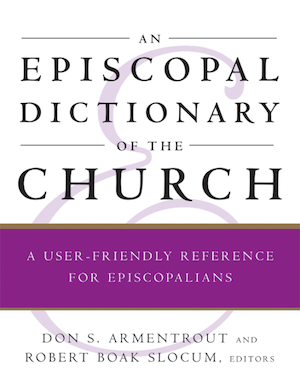Glossary of Terms
Very Reverend, The
See Reverend, The.
Vesey, William
(c. Aug. 10 or Oct. 10, 1674-July 11, 1746). Early leader of New York Anglicanism. He was born in Braintree, Massachusetts, and graduated from Harvard College in 1693. He served […]
Vespers
The early evening office of prayer in the church. The term is from the Latin word for “evening.” Lucernarium (lamp or lamp-lighting time) was an early name for vespers. Early […]
Vessels, Sacred
Vessels used in the eucharist, such as the paten and chalice. The term has also indicated the pyx, used to take communion to those unable to attend the eucharist, and […]
Vested Choir
A choir vested in cassock and surplice. A vested choir was often associated with a choral or sung service. The use of the surplice by choir members was one of […]
Vestibule
See Narthex.
Vesting Room
A room near the sanctuary of a church where clergy and lay people vest. Ordained and lay ministers use this room to put on and take off vestments that are […]
Vestments
The distinctive garments worn by leaders of the church’s worship. Many of the church’s vestments are descended from the ordinary dress of the imperial Roman society in which the early […]
Vestry
In England the annual election of churchwardens took place in Easter week. The parishioners gathered at the church to hear the outgoing wardens render their accounts and elect their successors. […]
Vesture
Another word for vestments, the distinctive garments worn by leaders of the church's worship. See Vestments.
Via Media
Latin phrase translated as “middle way” or the “way between two extremes.” It is from the philosophy of Aristotle. In his Nicomachean Ethics, he found the virtues such as justice […]
Viaticum
The administration of communion to a dying person. It was given as sustenance for a journey. The practice of viaticum as a meal for the dead was a pagan burial […]
Vicar
In the Episcopal Church, the title generally applies to the priest in charge of a mission congregation. The diocesan bishop is the rector, and the priest representing the bishop is […]
Vicarage
The vicar's residence. The vicarage may or may not be provided by the congregation served by the vicar.
Victimae Paschali
Latin incipit (opening words) of the traditional Easter sequence, “Christians, to the Paschal victim” (Hymn 183 in The Hymnal 1982). This plainsong chant hymn is ascribed to Wigbert (Wipo of […]
Vigil
1) A service at night prior to a major feast or other important observance. The vigil anticipates and begins the commemoration of the following day. It may allow the participants […]
Vincent of Lérins
(See Vincentian Canon.)
Vincent of Saragossa
(d. 304). He was probably born in Osca, the modern Huesca, in Spain. Vincent is known as the Deacon of Saragossa. He was martyred during the persecutions of Diocletian and […]
Vincentian Canon
The canonical threefold test of catholicity is found in the fifth-century Commonitorium of Vincent of Lérins (d. c. 445). Vincent was a monk on the island of Lérins in Gaul. […]
Virge
The virge is the staff which a verger carries in procession. The name comes from the Latin virga, “rod” or “staff.” It goes back to the ceremonial mace carried before […]
Glossary definitions provided courtesy of Church Publishing Incorporated, New York, NY,(All Rights reserved) from “An Episcopal Dictionary of the Church, A User Friendly Reference for Episcopalians,” Don S. Armentrout and Robert Boak Slocum, editors.

